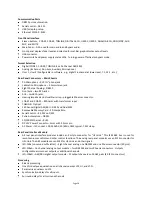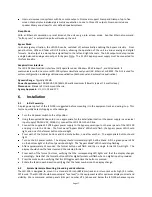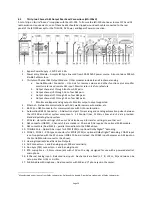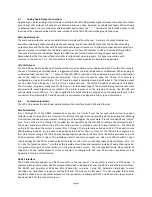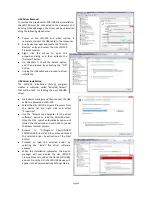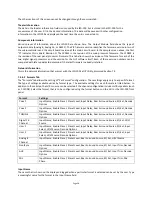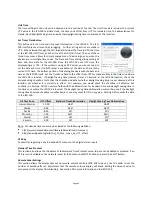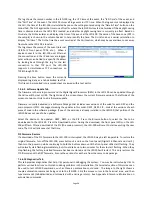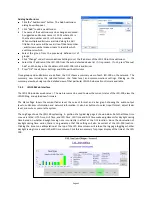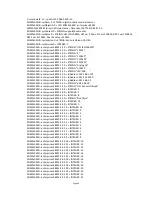
Page 30
Decode Option
Description
L_R
The two channel source drives just the left and right speakers.
L_C_R
The left and right channels of the source drive the left and right speakers. The center speaker
is driven with 0.707 times the sum of the left and right channels. The LFE channel is driven
with the center channel after passing through an 80Hz low pass filter.
Simple Matrix
The front speakers are driven with the same signals as L_C_R, described above. The surround
speakers are driven with 0.707 times the difference between left and right (0.707(L-R)).
Active Matrix
This option is only available if a DI-84 board is installed in the JSD-100. If the input is digital
and encoded with Dolby Digital® (AC-3), the signal is decoded to 5.1. If the signal is two-
channel analog or PCM (not encoded with Dolby Digital®), the signal is decoded to 5.1 using
an active matrix. If no DI-84 board is installed, the signal is decoded as L_R.
HI/VI-N Source
The HI output can be driven by a discrete input (such as AES channel 7) or an LCR mix. Most auditoriums are wired
to put HI on AES channel 7 since that is where the HI track is located in an Interop DCP. VI-N is typically placed on
AES 8. The JSD-100 allows a discrete input or an LCR mix to be used. If a discrete source is selected, an LCR mix will
be used for HI when no audio is present on the discrete channel. Thus, it is safe to use AES 7 for HI even though
many trailers do not have HI on channel 7. The JSD-100 will detect the absence of audio on this channel and fall
back to the mix. Use of the discrete channel is suggested since a special effort is made by the content producer to
make this channel dialog centric.
7.4.6.3 Equalizer Tab
The JSD-100 equalizer allows the
frequency response of the JSD-100 to
be adjusted for the acoustics of the
room. The RTA screen shows the
measured sound pressure level (SPL),
the measured level in each 1/3
octave spectrum band, and limit lines
for the desired equalization. By
default, the limit lines correspond to
the SMPTE ST 202:2010 limits for a
500 seat auditorium. Other limit sets
can be displayed (see Curve File,
below). The equalizer tab also allows
access to the automatic equalization
feature of the JSD-100.
RTA Channel Select Buttons
Channel select buttons are along the top of the RTA window. These select which speaker the generator is driving
and which channel the equalizer controls are adjusting. If an external pink noise generator is to be used with the
internal RTA, enable the internal pink noise generator, then disable it. Enabling the internal pink noise generator
configures the internal RTA for proper operation.
RTA Settings
When the mouse cursor is over the display area of the RTA, another row of settings becomes visible (as shown
above). Use the Source button to select whether the calibrate or PA microphone input is being used to drive the
RTA. The calibrate microphone input is on the 3.5mm TRS connector on the rear panel. The PA microphone input
is on the combination XLR ¼ inch TRS connector. Use the Zoom buttons to enlarge or reduce the text within the
RTA display area. Use the dB/step selector to adjust the vertical resolution as required to get all bands on screen
while providing the best vertical resolution. Make initial adjustments with a fast decay time. The fast decay time

